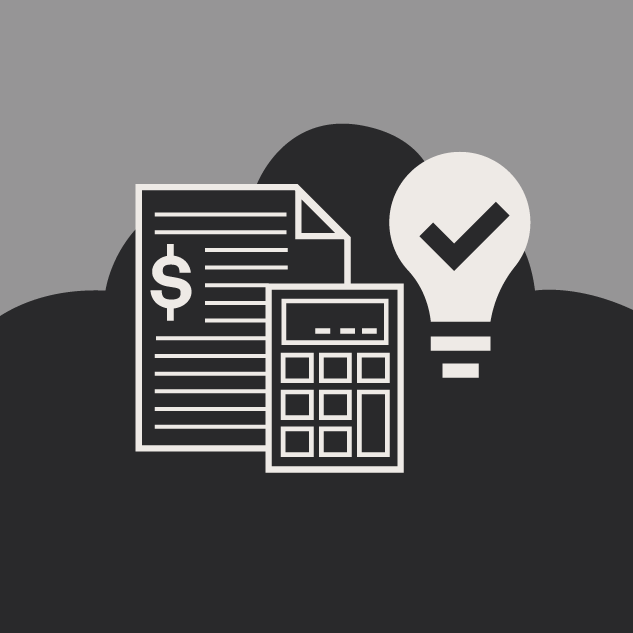Cloud CMS Migration: Costs, Benefits & Insights
Chris Osterhout SVP of Strategy#CMS, #Digital Strategy

Migrating to a cloud CMS platform represents a strategic investment in the future of digital content management. Here's what you need to know.
Migrating to a new cloud Content Management System (CMS) platform presents a modern solution for businesses seeking agility, scalability, and cost efficiency in their digital strategy. The transition from a traditional on-premises CMS solution to a cloud environment is a significant shift, promising lower Total Cost of Ownership (TCO) and enhanced operational capabilities. This article explores the true costs and considerations of such migration, including different cloud CMS cost models, and explains the roles of Software as a Service (SaaS) and Platform as a Service (PaaS) solutions, with a particular focus on Headless CMS and the additional investments it entails.
Business Drivers for Cloud CMS Migration
The decision to migrate to a cloud CMS is often propelled by a range of strategic business drivers, highlighting the need for organizations to remain competitive, agile, and responsive to market demands. These drivers not only justify the near-term investments required for transitioning to a cloud CMS but also set the foundation for a reduced TCO in the mid-term, thereby aligning with long-term business objectives. Some of these business drivers may include:
- Digital Transformation and Agility: In an era where digital presence and operations are crucial, businesses seek platforms that offer agility and flexibility. A cloud CMS enables rapid deployment of digital content across various channels, supporting a company's digital transformation strategy and allowing for quick adaptation to market changes or customer needs.
- Scalability to Match Business Growth: Traditional CMS solutions can limit an organization's ability to scale efficiently due to physical and resource constraints. Cloud CMS solutions offer scalable infrastructure that adjusts dynamically to a business's growth, ensuring that digital platforms can handle increased traffic or content volume without significant additional investment or downtime.
- Risk Mitigation and Compliance: Managing data security, privacy, and compliance with industry regulations is increasingly complex. Cloud CMS providers invest heavily in security measures, data protection protocols, and compliance certifications, reducing the burden on businesses to manage these risks internally.
- Cost Predictability and Management: The subscription-based pricing model of cloud CMS solutions offers businesses predictability in their operational expenses, shifting from a Captial Expenditures (CapEx) to an Operating Expenditures (OpEx) model. This transition allows for better cash flow management and reduces the need for large upfront investments in hardware and infrastructure.
- Innovation and Competitive Advantage: Cloud CMS platforms are continually updated with the latest features and technologies, providing businesses access to innovative tools with minimal additional investment. This enables companies to leverage new capabilities to stay ahead of competitors and meet evolving customer expectations.
Incorporating these business drivers into the decision-making process ensures that the migration to a cloud CMS is not just seen as a technical upgrade but as a strategic move that supports broader business objectives.
Deciding on a Cloud CMS Migration Path
After identifying the business drivers for migrating to a cloud CMS, the next step is to choose your migration path, each with its distinct investment level. Consider these questions before deciding:
- Does your current CMS offer a cloud version, such as a PaaS or SaaS solution?
Opting for a cloud version of your existing CMS usually requires the least upfront investment for migration. However, this might not be the best choice if your current CMS doesn't align with your organization's needs. - Is your organization in search of a new CMS or Digital Experience Platform (DXP)? Opting for a new CMS or DXP, particularly in conjunction with a website redesign, represents a more significant investment. This route provides an opportunity to address both current and future digital strategy requirements comprehensively.
- Does your organization require an eCommerce solution? If your migration project goals include incorporating or enhancing eCommerce capabilities, assessing cloud CMS options that specialize in or seamlessly integrate with eCommerce platforms is crucial. This might involve additional considerations around transaction security, scalability for handling peak shopping periods, and integration with payment systems, potentially influencing the complexity and cost of the migration.
Having explored the initial considerations for selecting a cloud CMS migration path that aligns with your business needs and strategic goals, it's essential to dive deeper into the financial aspect of such a transition. Whether you're leaning towards upgrading your current system, seeking a new CMS or DXP solution, or enhancing your eCommerce capabilities, understanding the financial implications is important for making an informed decision.
Cost Considerations in Cloud CMS Migration
As you plan your CMS migration to the cloud, it's important to be aware of not just the initial costs but also the various areas where investments are necessary, including the different cloud CMS pricing models. This awareness will help you foresee the required financial commitment and enable you to budget effectively for the transition.
Cloud CMS Migration Cost Categories
The following categories represent the primary areas of investment when considering migrating to a cloud CMS platform.
- Migration Costs: Transitioning to a cloud CMS involves initial data migration costs, including data transfer, system reconfiguration, and potential redevelopment of the website itself to be compatible with the new platform. These costs can vary widely depending on the complexity of the existing system, the volume of data, and whether you decide to perform a website redesign alongside the migration itself.
- Training and Adoption: Staff may require training to effectively use the new CMS, incurring costs related to training sessions and productivity losses during the learning curve.
- Integration and Customization: Integrating the cloud CMS with existing systems (e.g., CRM, ERP) and customizing it to suit specific business needs can add to the upfront costs.
- Platform Costs: All cloud CMS platforms carry recurring monthly or annual investments. Based on the cloud CMS you select, the cost models can vary significantly.
- Resource Costs: Whether you are performing your cloud CMS migration with internal team members or partnering with an external agency, these costs will need to be factored into your overall budget.
Cloud CMS Cost Models
Cloud CMS platforms typically follow subscription-based pricing models, which can be categorized into two main types: SaaS and PaaS.
- Software as a Service (SaaS): SaaS CMS platforms are fully managed by the provider, offering a turnkey solution that includes hosting, maintenance, security, and compliance. Customers pay a recurring subscription fee based on usage metrics such as the number of users, volume of traffic, or amount of data stored. This model is ideal for businesses looking for an out-of-the-box solution with minimal IT overhead.
- Platform as a Service (PaaS): PaaS solutions offer a cloud-based platform allowing customers to develop, run, and manage applications without the complexity of building and maintaining the infrastructure typically associated with such tasks. PaaS CMS platforms charge based on the resources consumed, such as computing power, storage, and network usage. This model provides more flexibility and control over the CMS environment, catering to businesses with specific needs or those looking to develop custom applications.
Note: Some PaaS providers are migrating to usage metrics like SaaS CMS platforms to make it easier and more forecastable for organizations.
The Role of Headless CMS
Headless CMS represents a paradigm shift in content management, decoupling the content repository ("body") from the presentation layer ("head"). This approach provides unparalleled flexibility in delivering content across multiple channels (websites, apps, IoT devices) using APIs.
Cost Implications
While a headless CMS can offer significant agility and scalability benefits, it requires investments in developing the front-end presentation layer, which can be built on platforms like Vercel or Netlify. These costs should be factored into the TCO, along with any expenses related to custom development and integration with other systems.
Despite the initial setup costs, a headless CMS often results in lower TCO over time. It reduces the need for extensive redevelopment as new digital channels emerge and simplifies content updates and management. Additionally, the separation of content from presentation enhances security and performance.
Note: Many SaaS and PaaS composable platforms offer headless content delivery APIs which offers the most flexible and future-proof solution. These are sometimes referred to as “Hybrid CMS” solutions but are becoming an industry standard.
Rethinking Total Cost of Ownership for CMS Platforms
When it comes to understanding the TCO for a CMS, many organizations find themselves navigating murky waters. Traditionally, the focus has been on visible expenditures such as annual investments in CMS software and hardware. However, this narrow view overlooks several critical expenses that are indispensable to keeping operations running smoothly. These overlooked costs include software licensing fees for server operating systems (e.g., Windows), antivirus programs, staffing expenses for maintenance and support, and fees paid to external agencies for additional services.
Upon an evaluation that includes these often-missed hard costs, the financial landscape shifts dramatically. It becomes evident that migrating to a cloud CMS, whether through a PaaS or SaaS model, presents the most cost-effective solution. The cloud model fundamentally changes the equation by:
- Minimizing Infrastructure Investments: By moving to a cloud CMS, the hefty upfront costs associated with purchasing and maintaining physical hardware and infrastructure are significantly reduced or eliminated.
- Streamlining Operational Costs: Cloud providers shoulder the responsibility for security, scalability, and maintenance, thus lightening the load on your internal IT team and diminishing the need for extensive staffing for these functions.
- Cost Optimization through Scalability: The pay-as-you-go nature of cloud services means you only pay for the resources you consume, sidestepping the financial pitfalls of over-provisioning or underutilization.
- Boosting Security and Scalability Agility: With cloud platforms, businesses gain access to top-tier security measures and the flexibility to swiftly adjust resources in response to fluctuating demand or growth, ensuring a competitive stance in the dynamic digital arena.
By broadening the scope of what is accounted for in TCO calculations, organizations can uncover the true cost-saving potential of migrating to a cloud-based CMS. This comprehensive approach to evaluating TCO underscores why, for most businesses, choosing a cloud CMS provider offers not only a reduction in direct costs but also an investment in operational resilience and strategic agility.
Conclusion
Migrating to a cloud CMS platform represents a strategic investment in the future of digital content management. While the migration process involves upfront costs and considerations, the long-term benefits—lower TCO, enhanced security, scalability, and the agility to adapt to new digital channels—make it a compelling choice for businesses aiming to thrive in the digital age. Whether opting for a SaaS or PaaS solution, or exploring the possibilities of a headless CMS, businesses must carefully evaluate their specific needs, migration budget constraints, dependencies, and strategic goals to ensure a successful transition to the cloud.
Related Articles
Results Matter.
We design creative digital solutions that grow your business, strengthen your brand and engage your audience. Our team blends creativity with insights, analytics and technology to deliver beauty, function, accessibility and most of all, ROI. Do you have a project you want to discuss?
Like what you read?
Subscribe to our blog "Diagram Views" for the latest trends in web design, inbound marketing and mobile strategy.

/Icons/blog-011524-min.png)
